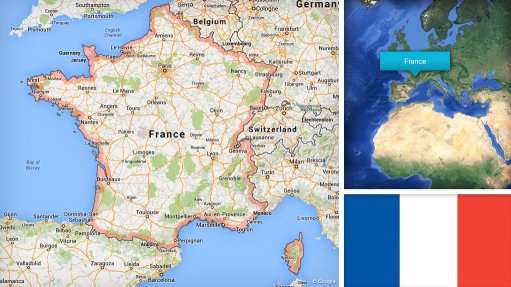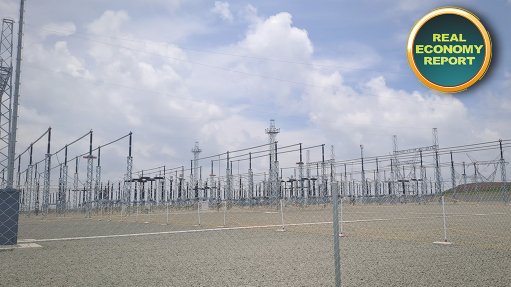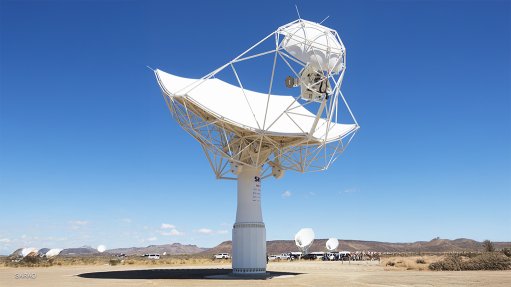Sanea conference speakers explore hydrogen, biogas energy potential
With South Africa diversifying its energy mix, as it looks to mitigate loadshedding and to meet 2030 and 2050 carbon emissions reduction targets, alternative industry players such as green hydrogen and biogas, offer potential; however, there are also challenges to contend with in pursuing these energy sources.
This was indicated by speakers at industry body the South African National Energy Association’s (Sanea's) 2022 Conference on November 11.
Making a balanced case for green hydrogen and ammonia, Wits Business School senior lecturer Dr Bruce Young said that, while there was considerable potential for hydrogen, there were also potential issues.
He said green hydrogen was enjoying a resurgence of interest as a potential central pillar in the renewable energy transition.
However, potential constraints include the production of green hydrogen at the multi-gigawatt scale required being technologically challenging and capital intensive.
Young also noted that green hydrogen was quite costly, pointing out that the forecast for a considerable decrease in both the costs of producing and transporting hydrogen were uncertain.
Moreover, he said there were several competition scenarios with green hydrogen, with the direct use of green electricity being the most prominent.
Also, Young pointed out that there were very significant megaproject business and execution risks for pioneers in multi-gigawatt-scale green hydrogen.
He added that hydrogen was not necessarily appropriate and competitive for all applications it is being considered for.
On a more positive note, however, Young averred that there was a role for green hydrogen to play, such as in difficult-to-decarbonise sectors.
Also, other benefits include that hydrogen burns cleanly, producing only water and no greenhouse gases.
BIOGAS
Meanwhile, Southern African Biogas Industry Association treasurer David Cornish made the case for the use of biogas to be bolstered in the country.
He pointed out that there was a low penetration rate of biogas projects in South Africa.
Moreover, the installed ones typically range from about 500 kW to the largest of about 5 MW, making these fairly small. He emphasised, however, that the potential in the industry was considerable, especially in the poultry sector.
Cornish noted some macroeconomic drivers for the biogas industry as including legislative pressures around landfills; rising waste disposal costs; rising electricity tariffs; a need for energy security; and environmental factors.
He said biogas could have a role in the just energy transition – by helping South Africa achieve its commitments under the Parish Agreement; presenting a good example of a circular economy; and reducing transport sector emissions.
Cornish explained that, because biogas projects provided baseload capacity, these were more reliable than most other forms of renewable energy, given that they were flexible and could offer a reliable, consistent flow of energy.
However, he noted that they were more expensive to build and operate than solar and wind projects; and considerably capital intensive.
They are also more labour intensive, however, which could benefit South Africa, which is grappling with an infamously high unemployment rate. This, however, requires skills development and training, with Cornish indicating that this there was a skills and capacity development gap across the industry value chain.
He noted that other challenges facing the industry were a lack of clarity on: government policy and direction relating to biogas; development of the market; access to funding; project development costs; what research and development into new technologies was required; and regulations and feed-in-tariffs.
Cornish said investment was needed in finance, skills and project development, as well as areas that would assist in overcoming barriers to entry.
Article Enquiry
Email Article
Save Article
Feedback
To advertise email advertising@creamermedia.co.za or click here
Comments
Press Office
Announcements
What's On
Subscribe to improve your user experience...
Option 1 (equivalent of R125 a month):
Receive a weekly copy of Creamer Media's Engineering News & Mining Weekly magazine
(print copy for those in South Africa and e-magazine for those outside of South Africa)
Receive daily email newsletters
Access to full search results
Access archive of magazine back copies
Access to Projects in Progress
Access to ONE Research Report of your choice in PDF format
Option 2 (equivalent of R375 a month):
All benefits from Option 1
PLUS
Access to Creamer Media's Research Channel Africa for ALL Research Reports, in PDF format, on various industrial and mining sectors
including Electricity; Water; Energy Transition; Hydrogen; Roads, Rail and Ports; Coal; Gold; Platinum; Battery Metals; etc.
Already a subscriber?
Forgotten your password?
Receive weekly copy of Creamer Media's Engineering News & Mining Weekly magazine (print copy for those in South Africa and e-magazine for those outside of South Africa)
➕
Recieve daily email newsletters
➕
Access to full search results
➕
Access archive of magazine back copies
➕
Access to Projects in Progress
➕
Access to ONE Research Report of your choice in PDF format
RESEARCH CHANNEL AFRICA
R4500 (equivalent of R375 a month)
SUBSCRIBEAll benefits from Option 1
➕
Access to Creamer Media's Research Channel Africa for ALL Research Reports on various industrial and mining sectors, in PDF format, including on:
Electricity
➕
Water
➕
Energy Transition
➕
Hydrogen
➕
Roads, Rail and Ports
➕
Coal
➕
Gold
➕
Platinum
➕
Battery Metals
➕
etc.
Receive all benefits from Option 1 or Option 2 delivered to numerous people at your company
➕
Multiple User names and Passwords for simultaneous log-ins
➕
Intranet integration access to all in your organisation

















